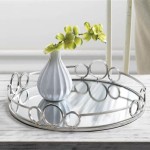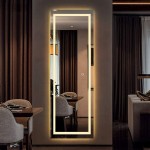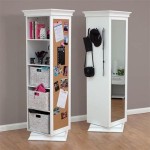Large Mirror Hanging Hooks: A Comprehensive Guide
Hanging a large, heavy mirror safely and securely requires more than just any hook. The weight and fragility of the mirror necessitate specialized hardware designed to distribute the load and prevent accidents. This article provides a comprehensive overview of large mirror hanging hooks, covering various types, weight capacities, installation methods, and safety considerations.
Understanding Weight Capacity
The most critical factor when selecting hanging hooks for a large mirror is weight capacity. Always check the mirror's weight and choose hooks rated to hold significantly more. This safety margin accounts for dynamic forces, such as accidental bumps or vibrations, that can momentarily increase the effective weight. Overlooking weight capacity can lead to the mirror falling, resulting in damage to both the mirror and potentially surrounding objects or individuals.
Types of Large Mirror Hanging Hooks
Several types of hooks are suitable for hanging large mirrors, each offering specific advantages and disadvantages:
J-Hooks: J-hooks, named for their shape, are a common choice for heavier mirrors. They typically feature a wider hook area to distribute weight and often come with multiple mounting points for added stability. They are usually installed directly into wall studs for maximum support.
D-Rings and Wire: This method involves attaching D-rings to the back of the mirror and suspending it from a wire strung across two hooks on the wall. This approach is suitable for heavier mirrors, as the weight is distributed across two points. Proper installation of the D-rings and secure anchoring of the hooks are crucial for safety.
French Cleats: French cleats consist of two interlocking pieces of wood, one attached to the wall and the other to the back of the mirror. This system offers excellent weight distribution and stability, making it suitable for very large and heavy mirrors. Precise installation is essential for a flush and secure fit.
Mirror Clips: Mirror clips are designed to grip the edges of the mirror, providing additional support and stability. They are often used in conjunction with other hanging methods, such as J-hooks or D-rings and wire, to prevent lateral movement and secure the mirror against the wall. They are particularly useful for frameless mirrors.
Installation Best Practices
Proper installation is paramount for the safe and secure hanging of large mirrors. Regardless of the chosen hook type, several best practices should be followed:
Locate Wall Studs: Whenever possible, hooks should be anchored directly into wall studs. Studs provide the most secure mounting surface. A stud finder can be used to locate them accurately. If installing into drywall without stud support, use appropriate wall anchors designed for heavy loads.
Use the Correct Hardware: Use screws and wall anchors appropriate for the wall type and the weight of the mirror. Oversized or undersized hardware can compromise the integrity of the hanging system.
Measure Carefully: Accurate measurements are essential for proper weight distribution and a level hang. Mark the desired hook locations carefully and double-check measurements before drilling.
Pre-Drill Pilot Holes: Pre-drilling pilot holes helps prevent the wood from splitting, especially when working with hardwoods. It also makes inserting screws easier and more precise.
Safety Considerations
Safety should always be the primary concern when hanging a large mirror. Consider the following safety precautions:
Use Safety Gear: Wear appropriate safety glasses when drilling and handling hardware to protect your eyes from dust and debris.
Enlist Help: Large mirrors are heavy and awkward to handle. Enlist a helper to assist with lifting and positioning the mirror during installation.
Regular Inspection: Periodically inspect the hanging hardware and the mirror itself for any signs of wear or damage. Tighten loose screws and replace any damaged components immediately.
Choosing the Right Hook for Your Mirror
Selecting the appropriate hanging hook depends on several factors, including the mirror's weight, size, frame type, and the wall construction. Consulting with a hardware professional can provide valuable guidance in choosing the best solution for your specific needs.
Wall Anchors and Drywall
When wall studs aren't available for anchoring, heavy-duty wall anchors specifically designed for drywall are essential. These anchors distribute the weight across a wider area, preventing the hook from pulling out of the wall. Choosing the correct anchor type and weight rating is crucial for a secure installation. Toggle bolts and molly bolts are commonly used for heavier applications in drywall.

Heavy Picture Mirror Hanging Kit 50 Kg

Heavy Picture Mirror Hanging Kit 50 Kg

Heavy Duty J Picture Hooks Wall Hanger Frame Mirror Hanging Large Srawplug

Gymax Full Length Over The Door Mirror Hanging Hooks Wall Mount Dressing Black Ca

Gymax Full Length Over The Door Mirror Hanging Hooks Wall Mount Dressing Black Ca

Secure Heavy Duty Large Picture Frame Mirror Hanging Kit Hooks Hangers Fittings

Simple Mount 30 In Heavy Duty Mirror And Picture Hanger Hm 30d The Home Depot

How To Hang A Heavy Mirror In 5 Simple Steps

How To Hang A Heavy Mirror Diy Family Handyman

50 Kg Heavy Duty Mirror Hanging Kit Secure Large Picture Frame Hooks Hangers Fittings For








